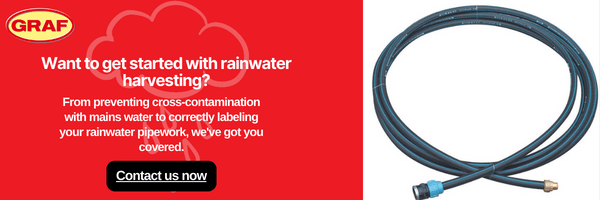We’ve referred to the British Standard 8515, which is the Code of Practise for rainwater harvesting in the UK, a number of times within several chapters of this book. This standard is in place to help users and installers, and retailers, of rainwater harvesting systems, ensure that systems meet certain requirements. Rainwater harvesting is not complicated and when installed correctly, there is very little that can go wrong with a system. However, as with any new technology, there needs to be standards, legislation and regulations in place to make sure that systems are fitted correctly and that the systems themselves meet with certain requirements.
The biggest concern in terms of regulatory guidance is the prevention of any cross contamination of rainwater into the mains water pipework system. Main’s water is provided to all properties throughout the country and has to be suitable for drinking, as all potable water should. Each water authority has strict standards, and they have to protect their pipelines, water supply and water quality, to meet the requirements of their customers. We believe they know that rainwater harvesting is a good idea and should be a helpful contribution to the water supply throughout the country. If rainwater is captured, filtered, collected and re-used on properties throughout the UK then this relieves some of the pressure on mains water supply. It can only be used for non-potable applications, such as flushing WCs, supplying washing machines, being used externally in the garden, washing vehicles, and general cleaning inside and outside of the home, but it does provide some benefit to water authorities. It relieves some stress on the surface water drainage network for one. Many drainage networks are overloaded in the UK and increased rainfall and regular storms are causing drainage pipes to be overflowing with water at times during the year. Flash flooding increases when drainage systems become overloaded, and water has nowhere to go. With increased population and increased building, more of the ground is being concreted over which reduces the natural infiltration of rainwater into the soil. When rainwater hits the roofs of buildings and surface of roads and car parks, it speedily flows to catchment pits, gullies and drainage channels to be collected and routed underground to be sent off to rivers and water courses. But during some storms, it’s all too much. The systems cannot cope.
Huge stormwater holding tanks are now being installed on the majority of all new developments, and these have to hold back the stormwater for a period of time so it can be slowly released out to the drainage network and to the water course, to prevent overloading and prevent flooding. But this just slows the cycle down. Huge volumes of water are being stored underground and not used, when more and more mains water is being used in properties throughout the country. It makes sense to use the rainwater. If every property had a rainwater harvesting tank it would reduce the amount of stormwater being dealt with in the drainage network. If this same rainwater is then put to good use inside buildings to use for the non-potable demand, then it reduces the volume of additional mains water being pumped around the country. Rainwater harvesting systems therefore tick two boxes as a minimum; they contribute to reducing the amount of stormwater overloading the drainage system and thereby help to reduce flooding, and they also allow the saving of mains water for uses which are not required. Who wants to pay to use high quality water to flush their toilet? Every time, literally flushing money down the toilet. Now it may not be too much money at the moment, and there is no great financial incentive to fit a rainwater harvesting system due to the low price of mains water supply to most counties in the UK, but this is certain to change. It’s been the experience of many other countries and it’s very likely to happen here too. What we must do though is make sure that the rainwater harvesting systems that do get installed help to meet these challenges and do nothing to hinder them. This is why standards and legislation is so important. Even if just one property in a county fits a mains water bypass to a system, which could allow rainwater to contaminate the mains water supply, this could filter through to the mains water supplied to thousands of homes. Potable, drinking water, wants to stay that way. Clean, suitable to drink, and use for all potable water applications. There should be no requirement ever, on any rainwater harvesting system, to have the need for a mains water bypass without an airgap. Only when systems are installed incorrectly will this be needed or desired by the user. All systems are now provided to meet this air-gap regulation and it’s in place for a very important reason. If mains water is not topping up the system in the way, it should then seek advice and assistance from an experienced person or company who can help. It should never be necessary to fit bypasses which risk contaminating mains water supply.
Another important standard is the identification of pipework on a rainwater harvesting system. It is now required that all pipework be labelled and easily identified as rainwater pipe and not mains water pipe. It must be black pipe with green stripes and with RAINWATER printed on in green text. This is so that if pipes are exposed in future years, then rainwater will not be connected to potable water supply points. It is also necessary to fix labels to taps that are connected by harvested rainwater supply. These must say “Not Drinking Water” to clearly show that it is rainwater not mains water being supplied. Most water authorities now have guideline documents which are provided to clearly show installers and developers what they expect to be included to identify pipework and supply points from rainwater harvesting systems. These are not complicated, and the labels and correctly marked products are not difficult to find, they help to ensure the quality of installations and maintain high standards of work which helps the rainwater harvesting industry.
Water Companies are now quite strict when it comes to meeting the standards and legislation which is now in place. This means they will often check installations meet the standards before switching on the mains water supply at new build properties. Just remember that these checks and standards are in place for good reason, and they do help to make sure a high quality of system, installation and working practise is provided, which does help all who favour rainwater harvesting and want to see its wider use spread throughout the world.



